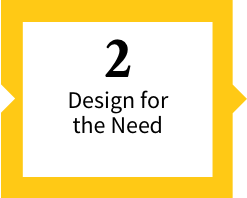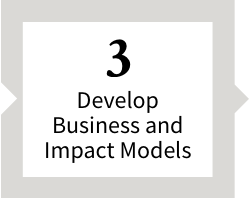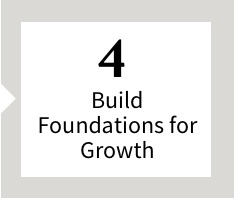Stage 2: Design for the Need

|

|

|

|
Human-Centered Design: Put People First
People are at the heart of a social venture. And yet, many social entrepreneurs want to develop a solution before talking with the very people who are essential to achieving social change. Human-centered design makes people the primary focus, which significantly increases the likelihood that a social venture will succeed.
You are embarking on a process of discovery. This requires approaching the problem not from your point of view, but from the perspective of the people you want to work with. Spend time building stakeholder relationships and getting good information from potential users of all types. This includes stakeholders whose needs you are trying to meet, and those who may be connected to the problem in other ways.
While you may have the best of intentions, as a social entrepreneur you must be sensitive to the population you’re working with and aware of how your work affects them. Be mindful of how you engage with people, the amount of time you ask them for, the expectations you set in communities that are contributing to your work, and carefully evaluate the potential risks or unintended consequences of a solution.
Every social problem exists within a complex ecosystem of stakeholders. When you are a social entrepreneur, you need to talk with the key people in that ecosystem. For example, could you create a solution for an education problem if you only talked with teachers? Not if you want to succeed. You would need to learn from school administrators, families, students, teachers, and possibly others in order to get a full picture of the problem – and what it will take to solve it.
Experimentation: Synthesis and Solutions
It’s critical to synthesize what you learn in needfinding. Collect and make sense of all the insights you gather as you explore the need through interviews and observation. You may find that there’s a wider range of stakeholders than you initially considered, so you may want to get input from more people. The best way to avoid getting stuck in needfinding is to start prototyping and continue to iterate or revise your solution based on the feedback you get from user testing.
You need a strong hypothesis of a solution before you can move on to start building a business model for it. Be sure to think through how a possible solution could be of value to someone who will use or pay for it. As you consider potential solutions, recognize the critical role of behavior change. There is often a big gap between what people say they want and what they’re actually willing or able to do. How could your solution bridge that gap?
Key areas of focus
- Connecting with and learning from potential users/consumers
- Exploring human-centered design solutions for the social problem
- Needfinding
- Ideation – brainstorming solutions focused on user needs
- Prototyping solutions and user testing
- Collecting feedback from users and other stakeholders
- Iterating – revising solutions based on what you learn
Key questions to ask
- How can I reach people in a culturally appropriate and sensitive way?
- What are the user/consumer needs?
- Will my solution solve the problem that I really care about?
- Has anyone tried this solution before? If so, what worked and what did not work?
- What behaviors are required for my solution to work?
- Do people have what they need (motivation, resources, skills, etc.) to do what is required for my solution to work?
- What is my value proposition?
- What is the potential value of my impact?
- Are there possible environmental, social, governance, and/or technology risks in solving the problem?
- If I identify a great need and solve it, is that my biggest point of leverage on the system? Or are there other ways that I could have a greater impact on the problem?
Develop a strategy for social change
Assess the risks of your social venture
Explore resources from the Stanford Design School
Learn about human-centered design
Creative Reaction Lab (see their Field Guide to Equity-Centered Community Design)

